Komi
Komi
Washington, DC
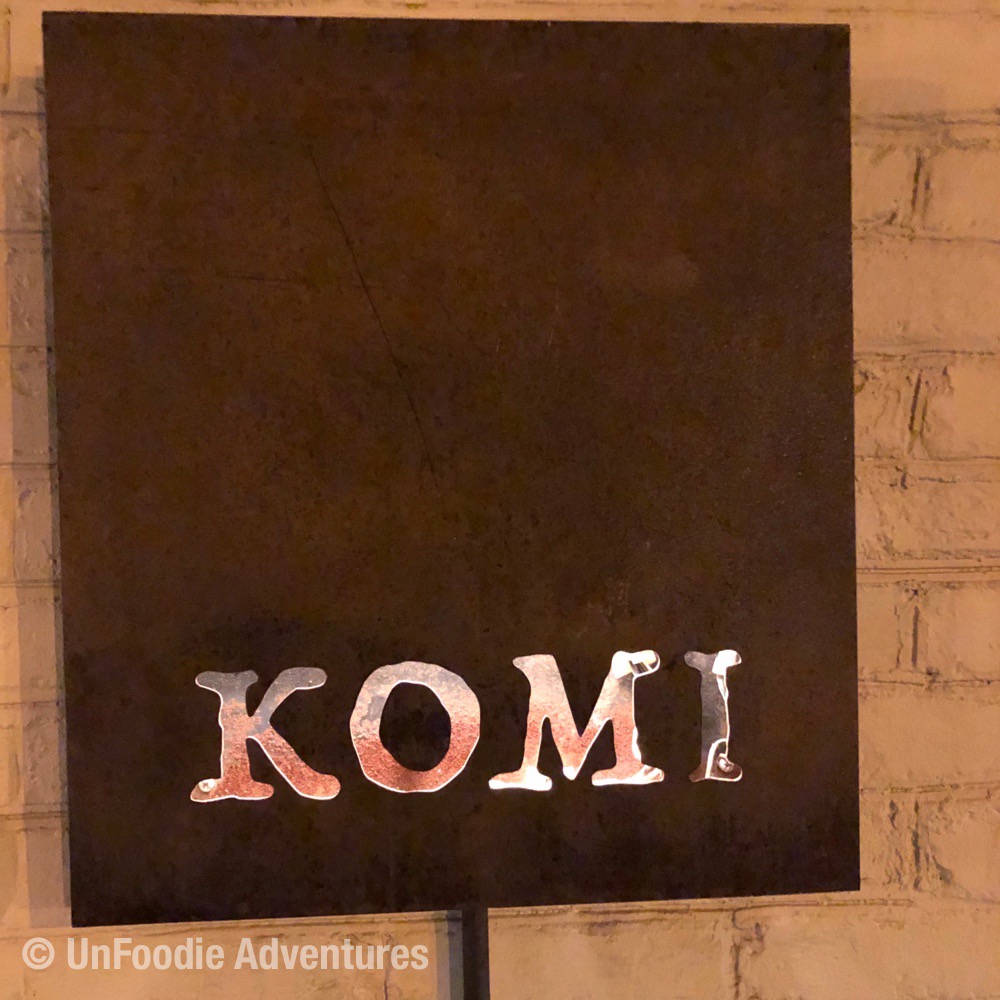
Just a few blocks off Dupont Circle, Komi is in a highly accessible part of DC, well traversed by both locals and tourists. The foodie scene in the vicinity is exploding – hopeful patrons line up at 5:30 to grab the few remaining walk-in seats at a number of hot pop up restaurants in adjacent buildings. Just walk a few blocks and you are in spitting distance of a number of starred fine-dining establishments so there are many options for the discerning diner. Restaurants have to bring their top game to survive here. And game is indeed brung (brought) as Chef Johnny Monis’ Komi isn’t just surviving, it’s thriving, often making the top of “Best restaurant in DC” lists.

The block where Komi is located can most charitably described as quaint and developing, with 2-3 story multi-family residential buildings commonly seen in Washington DC’s more blue collar residential neighborhoods. Komi is situated on the raised ground floor of a cream colored brick building adjacent to the corner drug store. A black iron staircase leads to a simple wood-framed glass pain door and is adjacent to the only window to the dining room. This will become relevant later when we talk about lighting during the meal.
Upon entering, you land in the long and narrow dining room with the kitchen at the end. The decor is spartan and tasteful with bare wood tables and walls of brick alternating with white walls. One single flower arrangement in a centerally located staging table provides the only color. Given how dark it gets in the restaurant after the sun sets, there wouldn’t be much point in having an elaborate decor anyway.
The staff welcomed me to the restaurant and seated me (yes, again I was dining alone, which probably made it a bit easier to take photos – I had an excuse to be on my phone, texting and doing email throughout the meal). Having done my homework, I knew about Chef Monis’ prohibitions regarding photography, particularly of the plates. That’s why most blog reviews of this restaurant are mostly text with only the RARE photo. Well my friends, not here! I braved being bodily thrown out for taking photos of almost every dish. As the evening progressed, and it got darker and darker (without any real lighting in the dining area) this became progressively harder. I had to use the light of my iPad (which I was reading) to illuminate the dish as I photographed with my iPhone (where I was supposedly doing email). Totally a James Bond move, I’m sure you all will agree! CIA, FBI, MI6, call me….

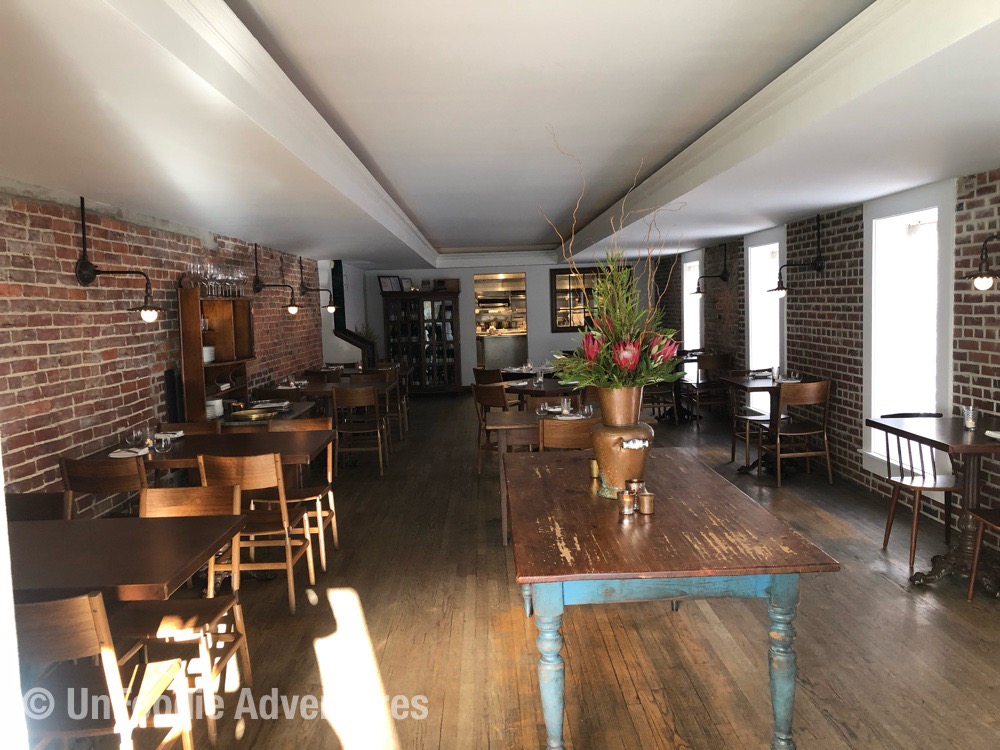
Now a blow-by-blow of the amazing meal!
We began the meal with a glass of Riesling from the Rhône Valley. Usually, I start out with a nice glass of bubbly, but because it was so hot, I wanted something that was a little less dry. I decided to try this fairly sweet and almost fruity (peach and nectarine) wine at the recommendation of the sommelier Kyle, with whom I had the opportunity to chat on a few occasions during the evening. He is a very nice and knowledgeable chap, and is happy to make bold suggestions for guests – if you don’t like it, let him know and he’ll bring you something else. I get the feeling we have the same philosophy on wines – give something unique a try because you may find a diamond in the rough or a varietal or wine making style that really resonates with you.
The first course (morsel really) was a steamed brioche bun with filled with cream and topped with salmon roe. The fresh cream exploded forth from the bun as I bit down, mellowing out and nicely balancing the salty roe. The contrasting textures of the pillowy bun and the popping roe also worked well together. A great start to the meal! My only complaint at this point was that it was sooo small. But, I was very thankful for this later in the meal.
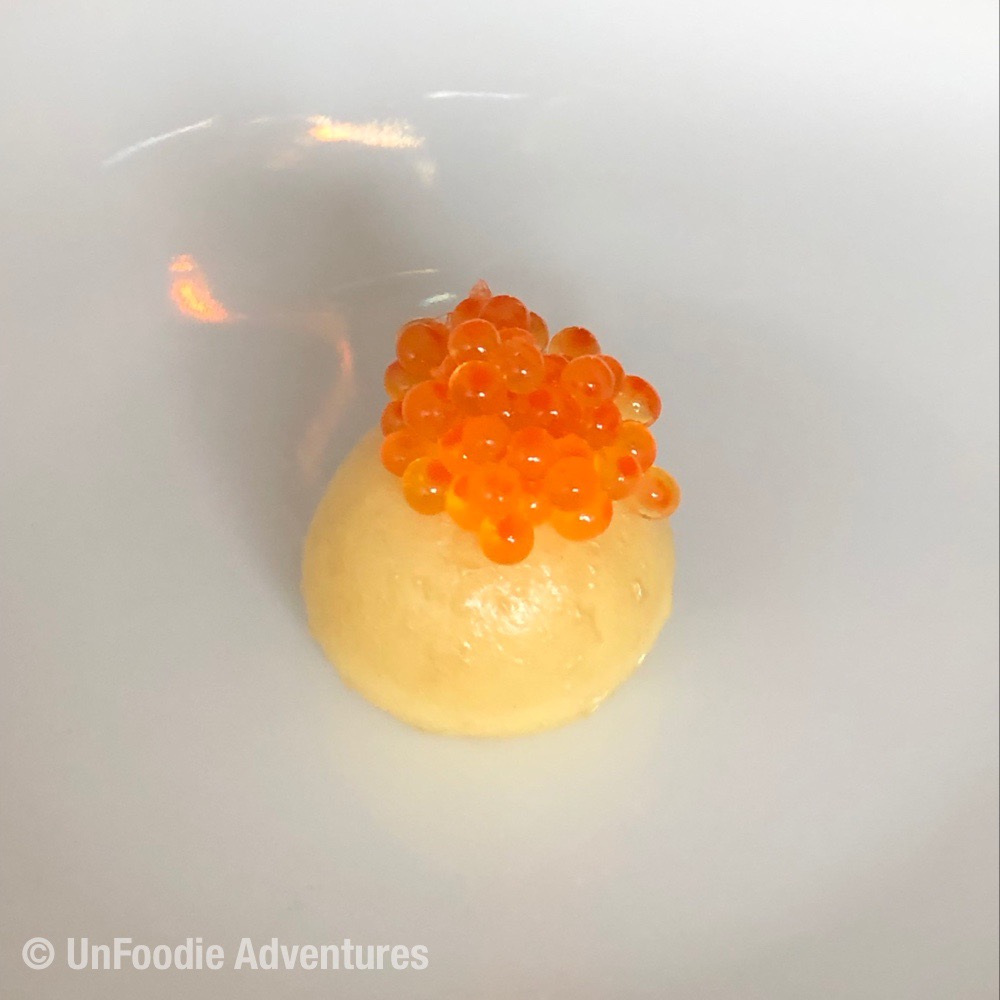
Next, another morsel, although very different in nature. I was served seared watermelon topped with fig-leaf infused honey and granules of salt. This was yet another beautiful item. I’m not sure what the searing did to the watermelon as I couldn’t discern any textural or taste impact, but a neat idea nonetheless. I’ll go out on a limb and suggest flash fried watermelon next time. The honey was delicious, but given how sweet the watermelon was, probably unnecessary. I have to admit – I didn’t get much flavor from the fig leaves, perhaps because I wasn’t sure what flavor profile to look for. While not contributing to the flavor, the fig leaves did add to the story line as they came from a tree in Chef’s back yard – something that was interesting, connecting us to the chef in more than just the traditional manner.
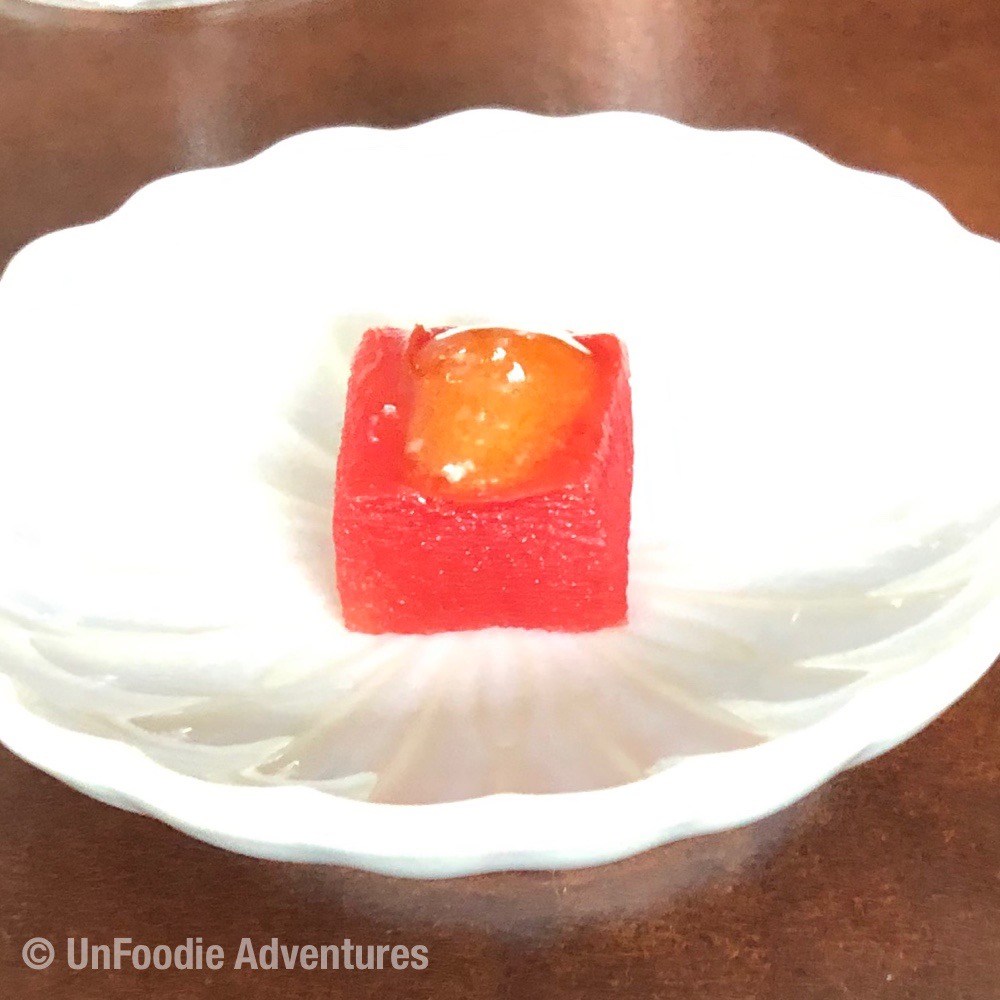
The next dish was a nice little bit of molecular gastronomy featuring kampachi or almaco jack reconstructed into a fillet. I say reconstructed because the fish is diced and then reformed into a disk shaped patty by aspic or gelatin made from the fish’s bones. Sunflower seeds added a nice nutty flavor and additional texture to what might otherwise be a monotonous from a textural and flavor standpoint. The fish had a mild flavor giving this dish a certain lightness. However, I wasn’t overly fond of the gelatin and the texture it contributed to the dish. Perhaps I associate it too much with Jello deserts of my misspent youth…
At some level, this dish inherently irritated me. I dislike the idea of manipulating a presumably high quality ingredient for manipulation sake – to exercise a technique. To de- and then re-construct the fish without any significant flavor addition was a missed opportunity. I didn’t think the addition of the sunflower seeds was impactful enough – next time, get more textural or flavor elements. Use a different aspic so we get a combined flavor – where the sum is greater than the parts.
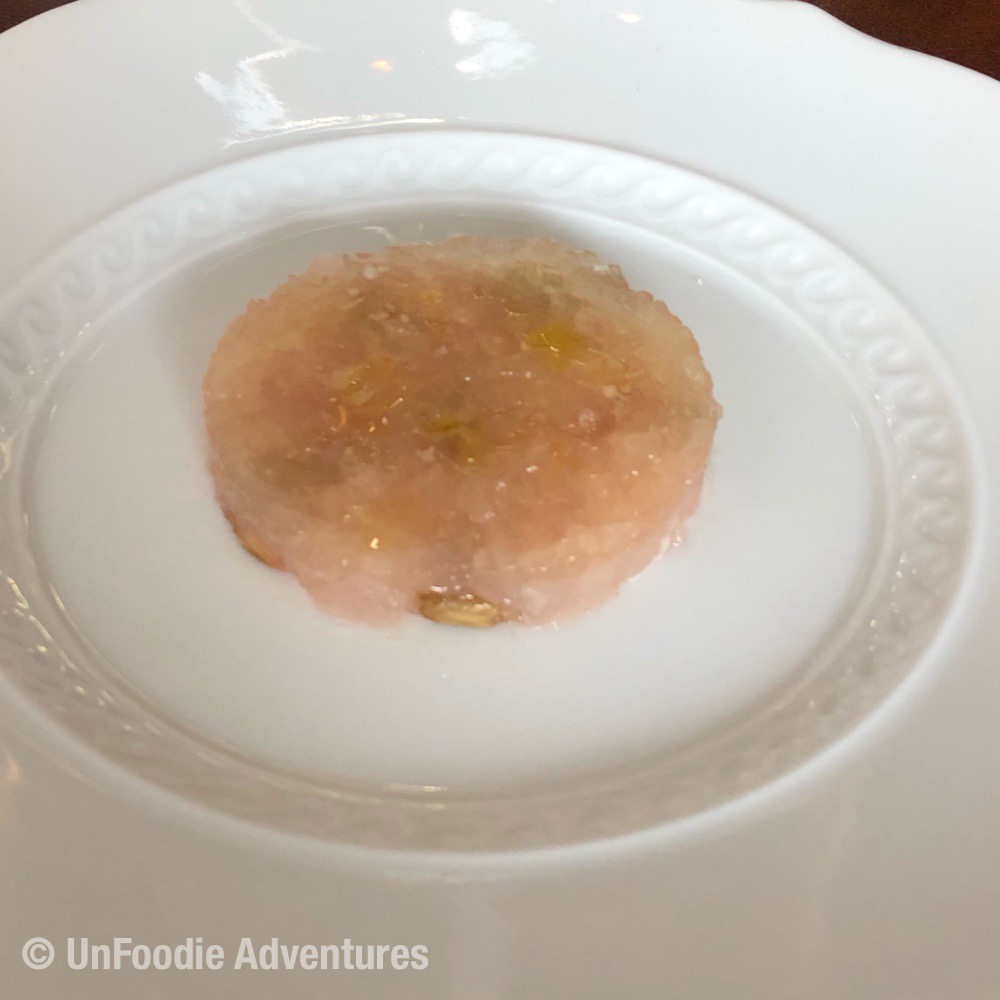
The next dish was arancini topped with pickled plum on a bed of creamed sweet corn. Arancini are fried breaded arborio rice balls that originated in Sicily and can be stuffed with cheese, meat or even vegetables. They are often made with leftover risotto as a snack or a quick meal. This got me wondering if the restaurant had served risotto last night? The arancini had a mild neutral cheese that just gave additional richness complimenting the sweet creaminess of the corn and contrasting nicely with the tartness of the picketed plum. These were yummy little balls of fried goodness. I commented to the waitress that I could have eaten a dozen of them. She did offer to bring me a few more but thankfully, I had the presence of mind to decline as we were still early in the meal.
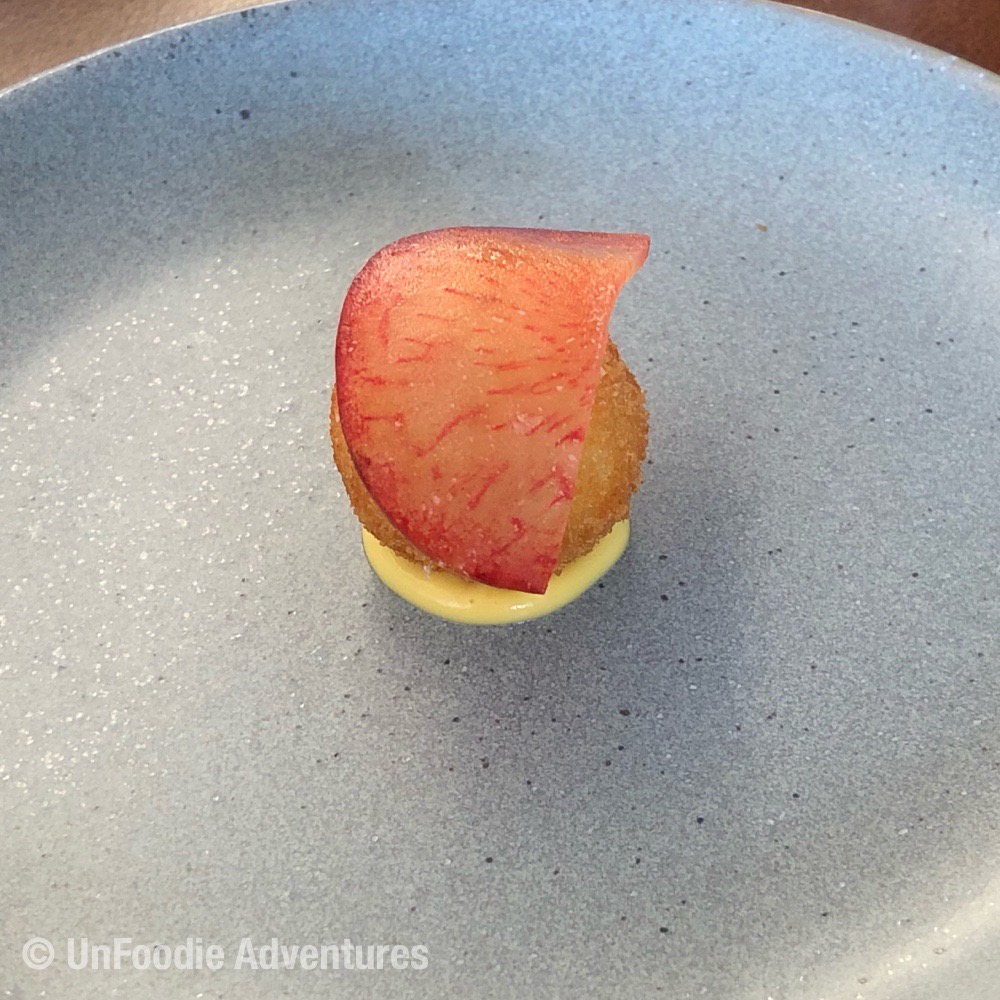
The seafood theme continued with a crab and bean salad. Grilled and steamed green and yellow summer long beans with Maryland crab and crushed pumpkin seeds. The beans were wonderfully fresh and grilled and steamed to perfection. They provided a great crunch to the crab which was unfortunately a tad over-salted. The sunflower seeds were a bit odd in this dish, perhaps an attempt to tie this dish with other items from the evening, or maybe just a miss…
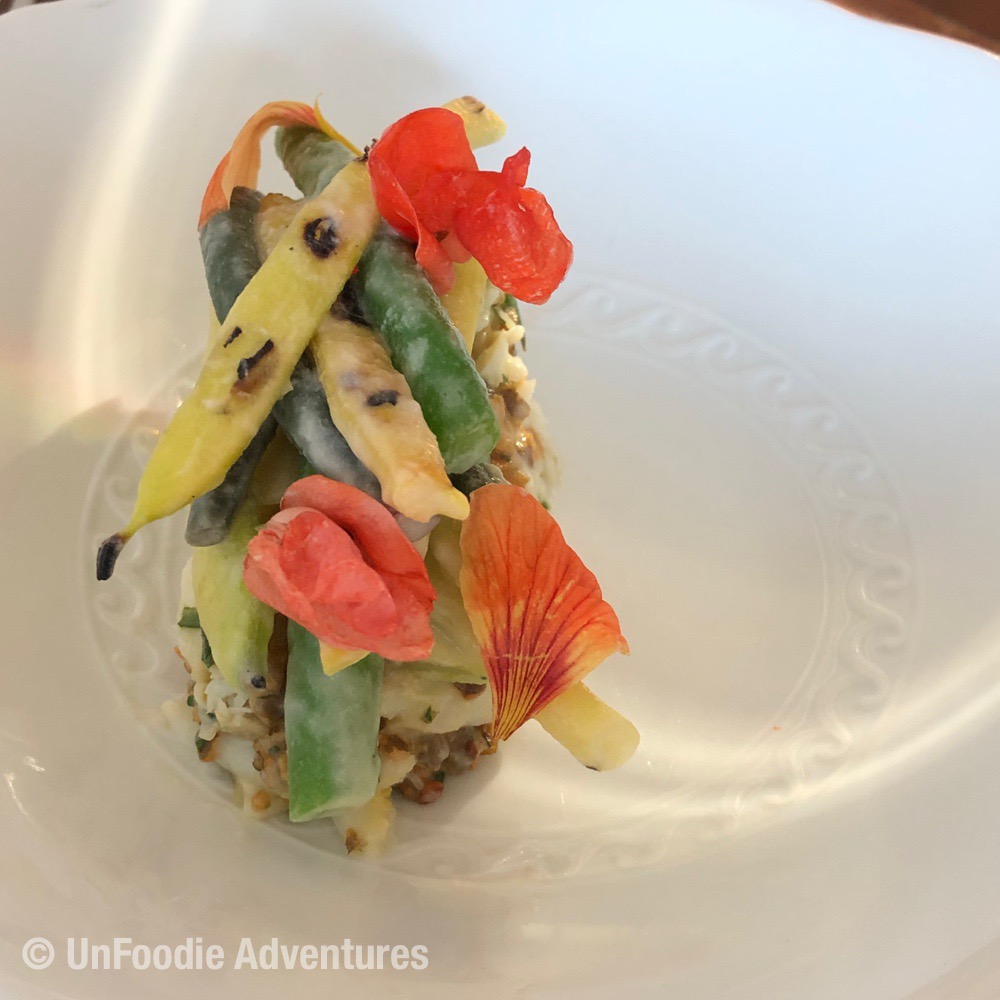
Kyle brought me another glass of wine that he thought would be a good pairing with the next few dishes. I hadn’t ordered this second glass, but he was thought it would go well with the next few dishes and might be something I would enjoy based on my previous discussions with him. He wanted me to try it to expand my concept of what can be done with pino noir grapes – a very kind gesture to be sure. Having the appearance of a cocktail rather than a glass of wine, the Fulani Sui Lieviti Vino Spumante Rosato was an interesting Northern Italian wine that doesn’t come topped with cork or even a screw top, but a pop top (think beer bottle cap). Unlike the traditional champagne or sparkling wine method, there is no added sugar. Here the winemaker relies on the original grape sugars for all the “action”. When the wine is at a modest sugar content, they bottle, cap with a pop cap and allow the remainder of the fermentation to drive carbonation. This results in a very dry and mildly effervescent wine with pink lemonade and green apple on the nose and almost tart lemon/grapefruit taste with vinegary salty tones. A very interesting drink that worked really well and added brightness to the next few courses.
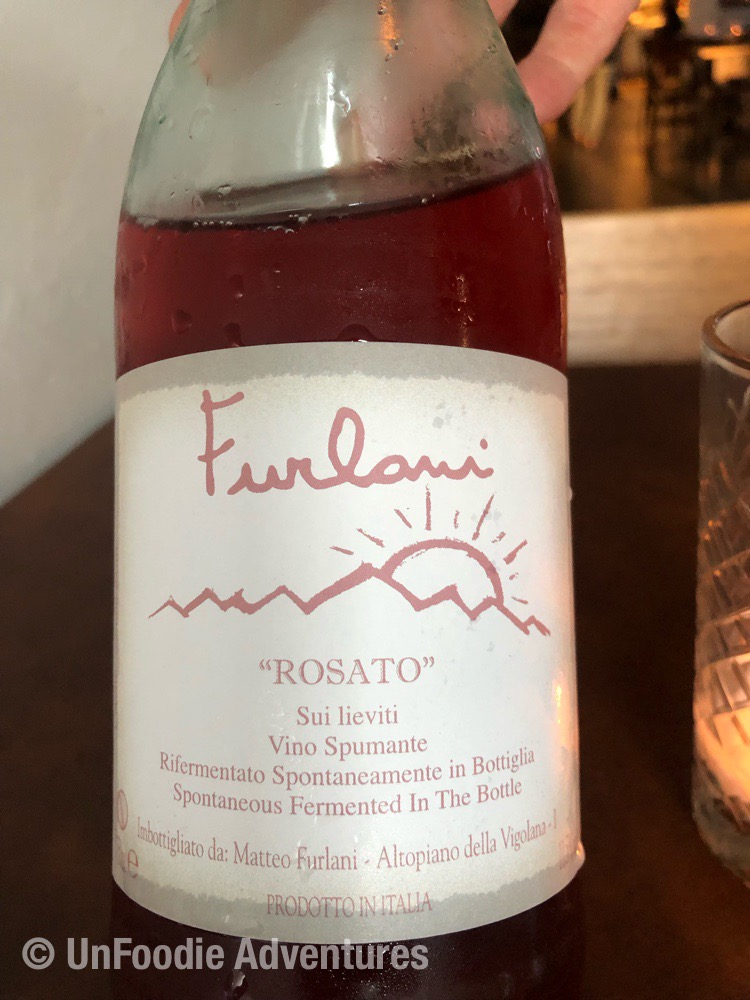
The next wave of food was a deluge (in the best way possible) of three dishes: Bread – semolina sourdough with black eyed peas and herbs; Meat – homemade mortadella with pistachio ; Salad – heirloom micro-tomatoes and cucumber with creamed tofu.
Given the previous courses, this trio represented a fairly dramatic shift in the meal from light bites to more substantial dishes. Also, bread, meat and salad – this could have been a meal onto itself at a lesser restaurant (with larger portions of course).
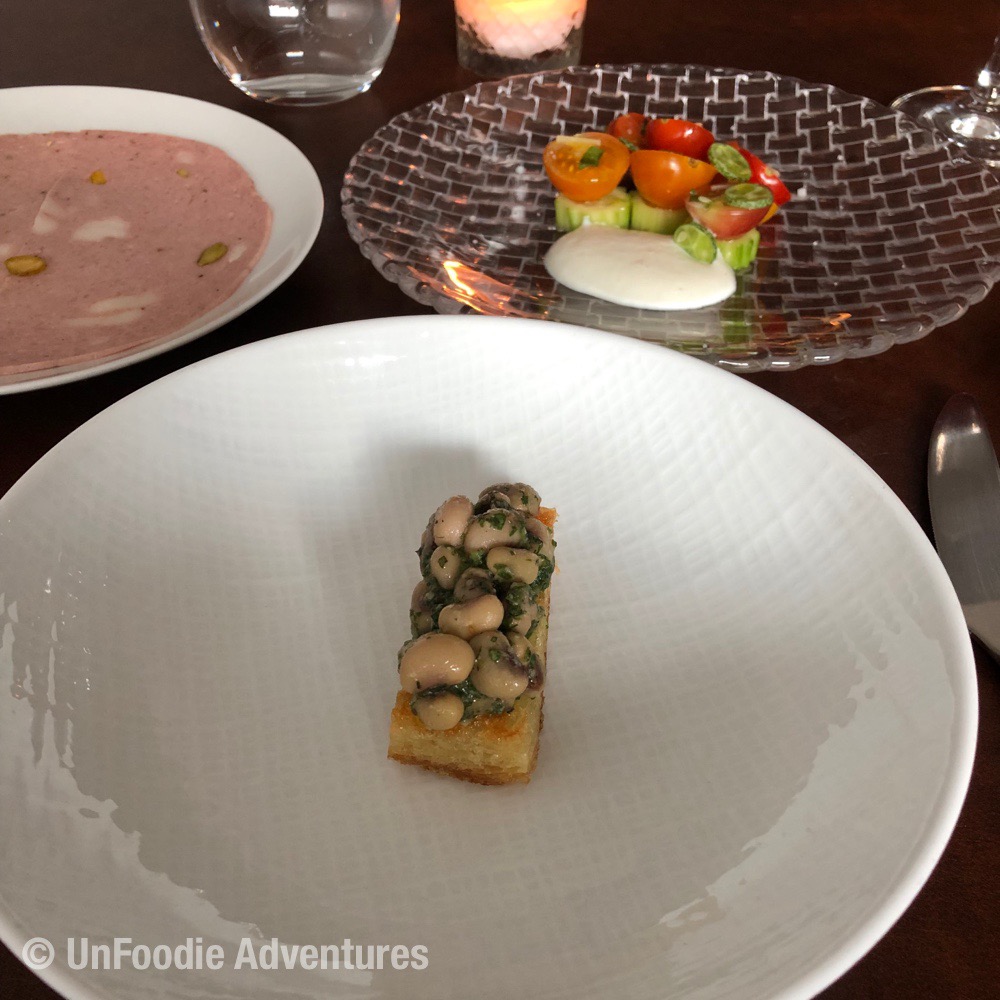
The sourdough was made with a starter the chef has been using for over a decade – guess if it ain’t broken… It had a nice heft and crunch to it and the beans were creamy and well spiced.
The mortadella, made in the traditional style of Bologna, Italy, was perfectly salted. It had the rare pistachio, giving it a nice textural variation – something that is apparently common even in traditional mortadella.
The salad was unexpected because of a mild ginger and sesame dressing that gave it a bit of heat to contrast the cool of the cucumber and creamed tofu. The small round slices were baby cucumberlings which originated in Persia. It was a little sobering but my server billed the salad as the last taste of summer. Never has a season been so clearly demarcated for me.
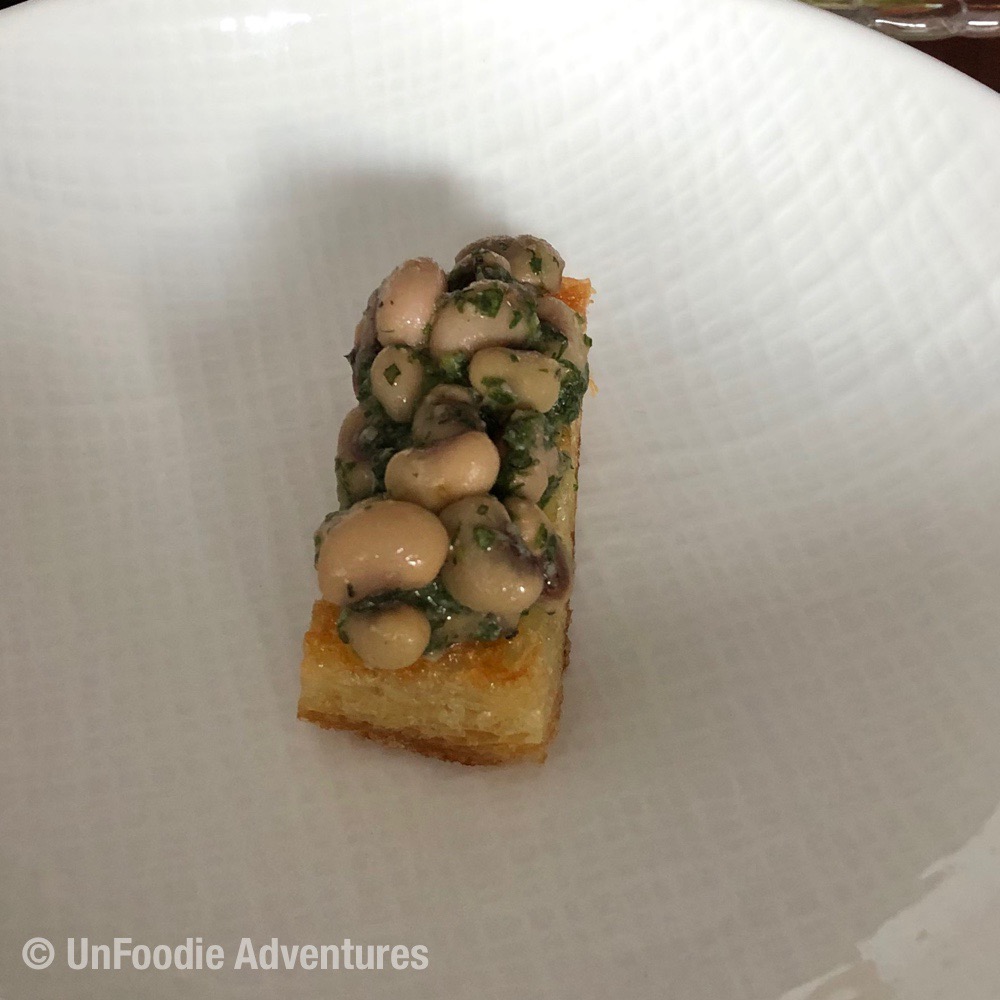
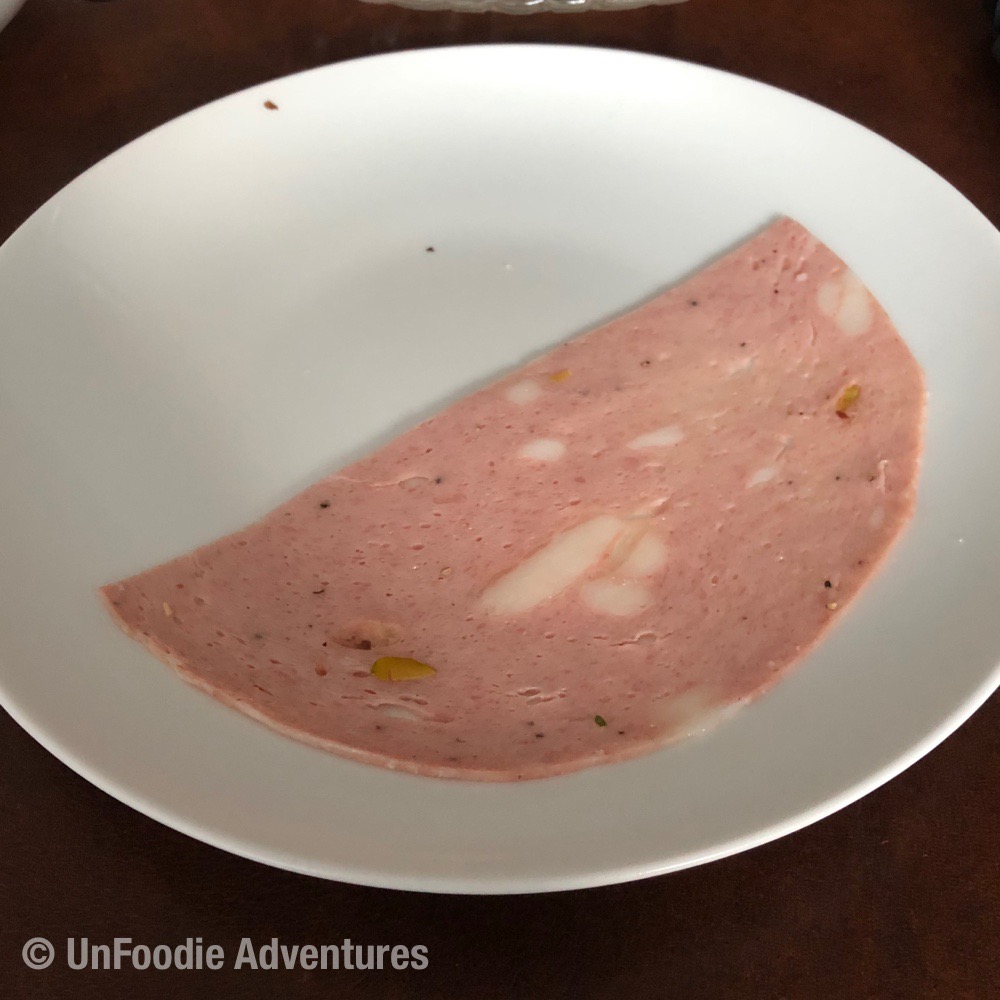
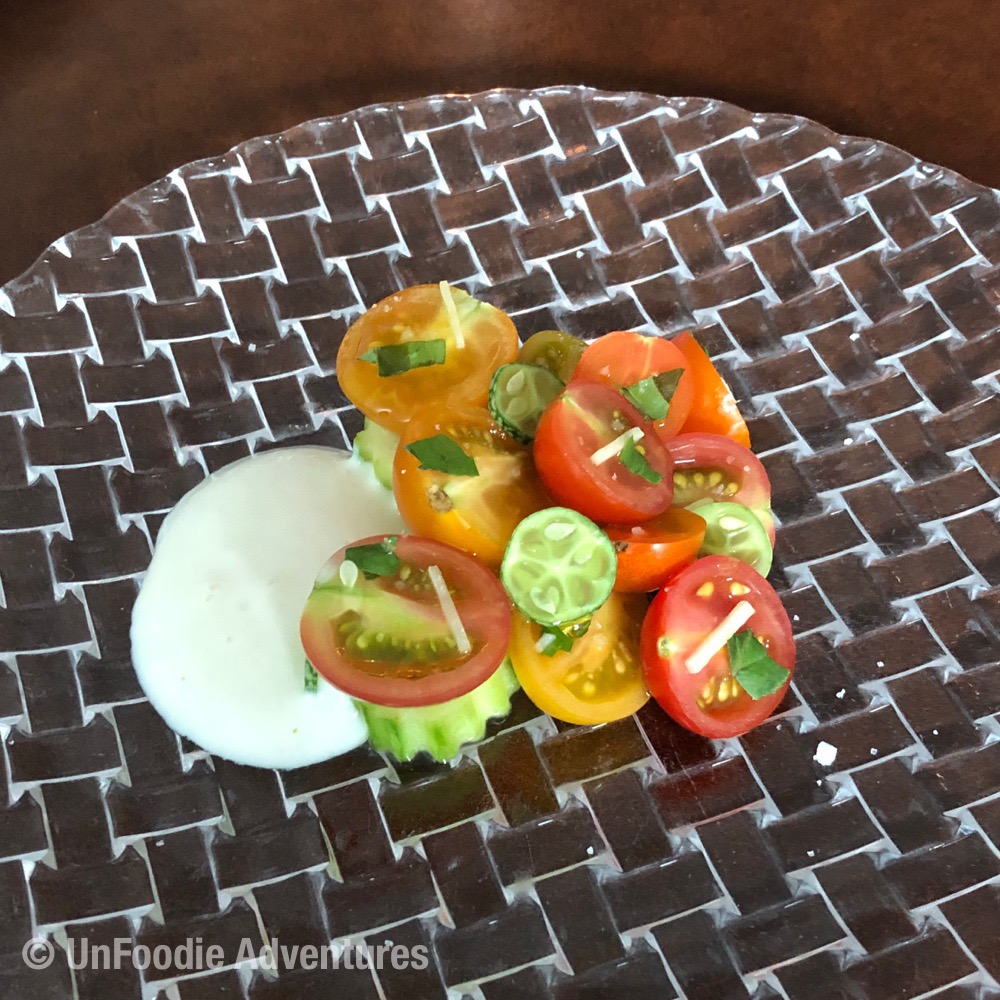
The next dish was probably my favorite of the night- yogurt filled ravioli in a cream base with summer corn and chives. The ravioli were decadent with a fresh yogurt filling that burst in your mouth. The cream base was luxurious and lightly flavored with a hint of saffron. The summer corn added additional bursts of sweetness and the chives gave it a freshness. This dish was particularly good with the fruity, dry and tart rosato wine.
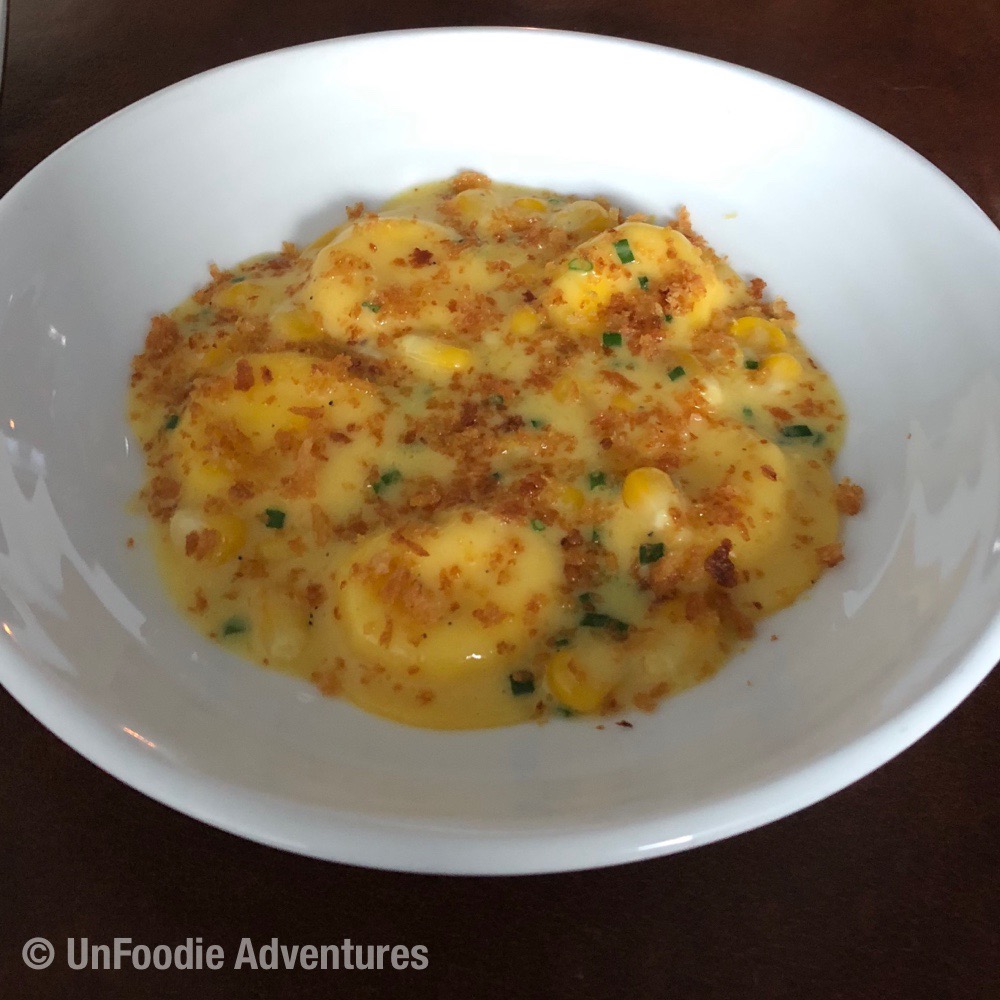
By this time, it was starting to get pretty dark and I was having a difficult time taking photos. Even with the iPad and iPhone setup, it was challenging, and doing so covertly was testing the limits of my capabilities.
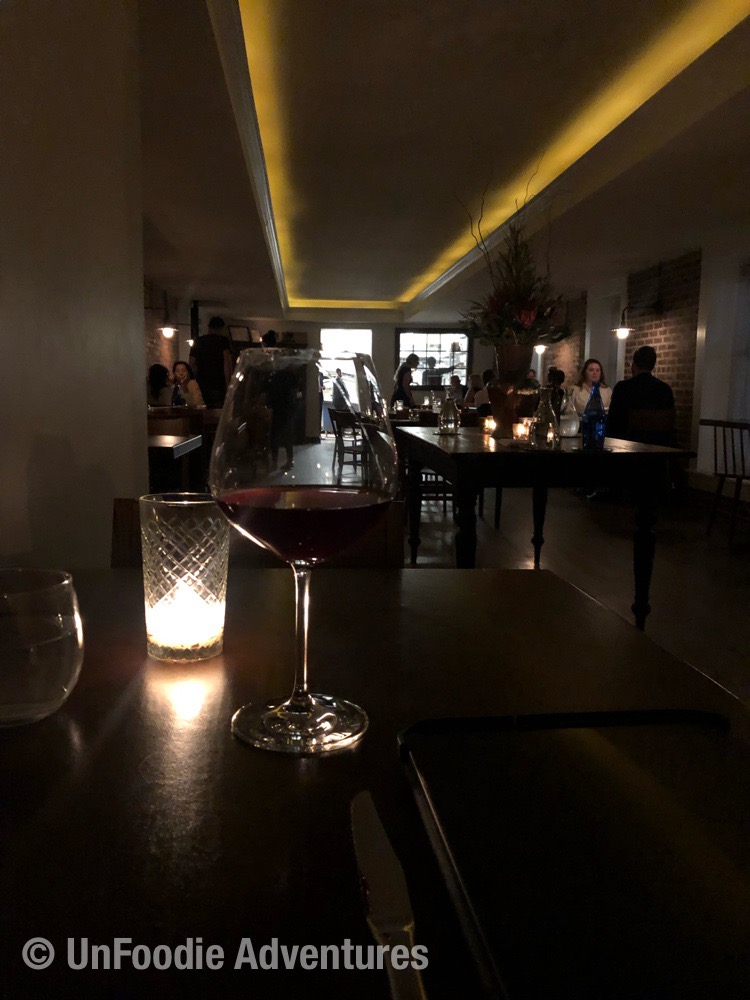
Moving from pasta to fish, I next had what was billed as amberjack collar grilled in shawarma spices. Hmm – the collar (as the name would imply) extends from the eyes to the gills or perhaps the pectoral fin. Now, it was pretty dark but I’m pretty sure I was served the socks (more traditionally known as tail) instead. All that being said, the fish was deliciously spiced. I love shawarma and the spices were perfectly toned for fish (otherwise would be a bit too strong). The fish was crispy on the outside and flaky on the inside – just right.
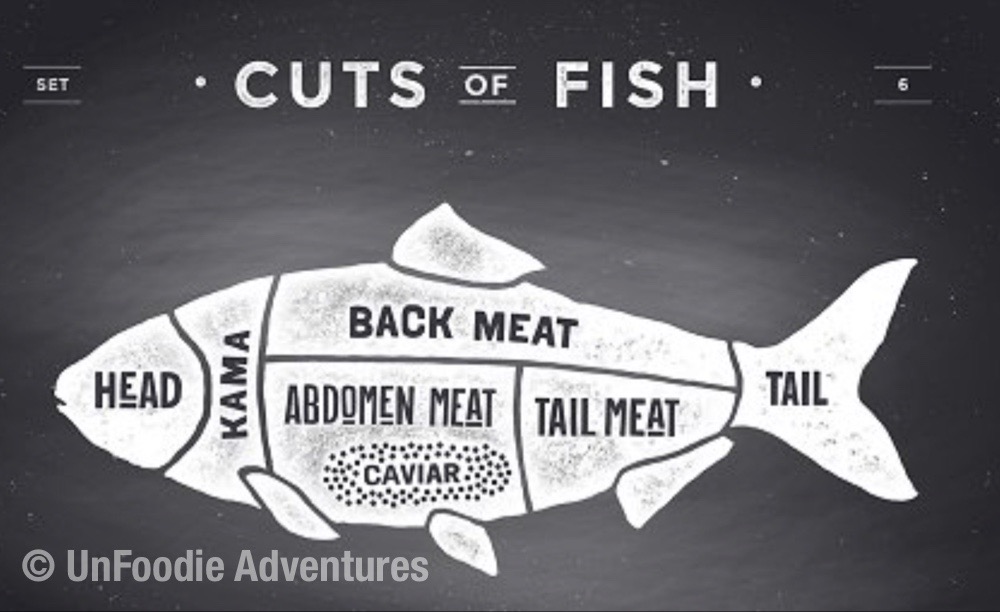
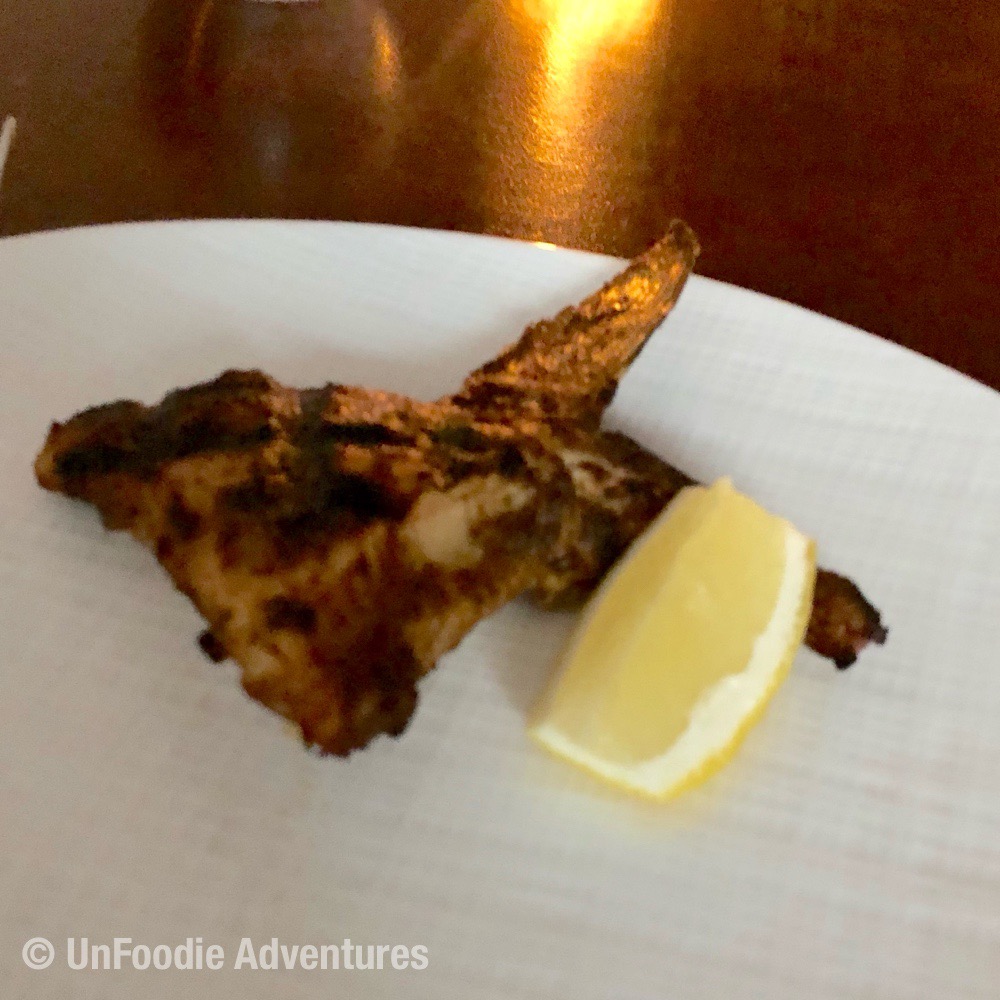
For the next couple of courses Kyle served me a 2017 Régnié from Guy Breton. Guy along with three other producers in the area are collectively called the “Gang of Four”. They use traditional yeast cultures and methods to make this Beaujolais. This juicy and smooth wine from 100 year old Gammay vines has a robustness and hint of spice that allows it to stand up to starch and meat courses.
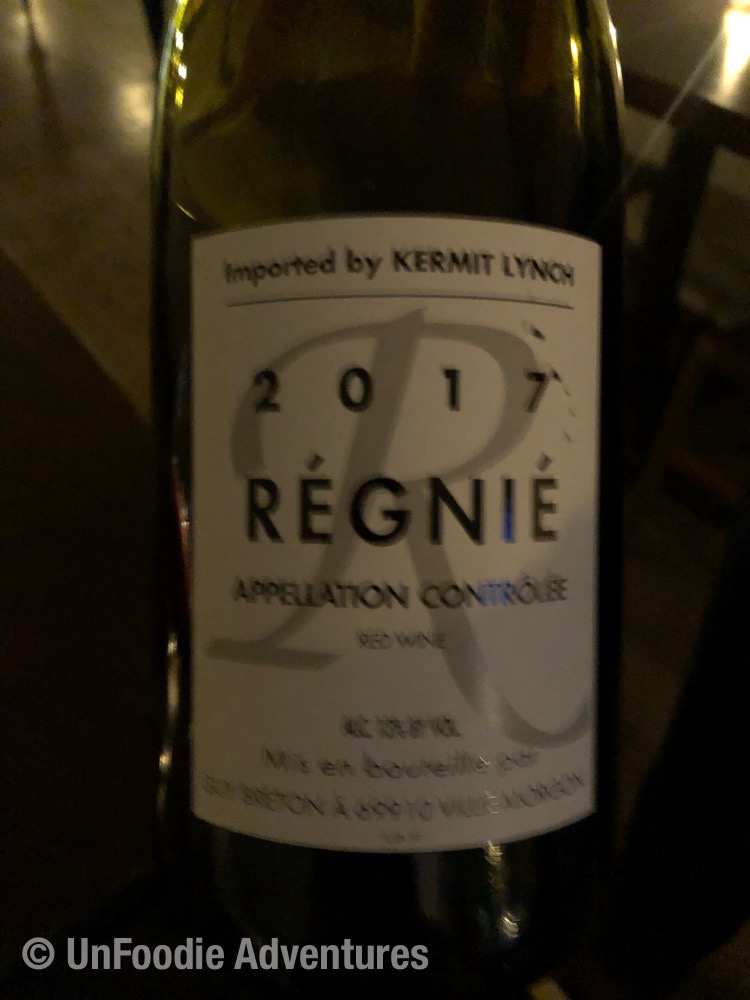
I next had homemade pasta with tomato and pesto. The spiral pasta prepared very al dente had been crafted around wooden dowels earlier in the week – talk about fresh. It was served with a tomato and pesto sauce topped with Parmesan cheese. The pasta had a good bite and was very bright and herby without being overpowering. Komi has gained some acclaim for its pasta dishes and after then ravioli and this spiral pasta, it was clear to me why. And true to Kyle’s word, the Régnié paired perfectly with the dish.
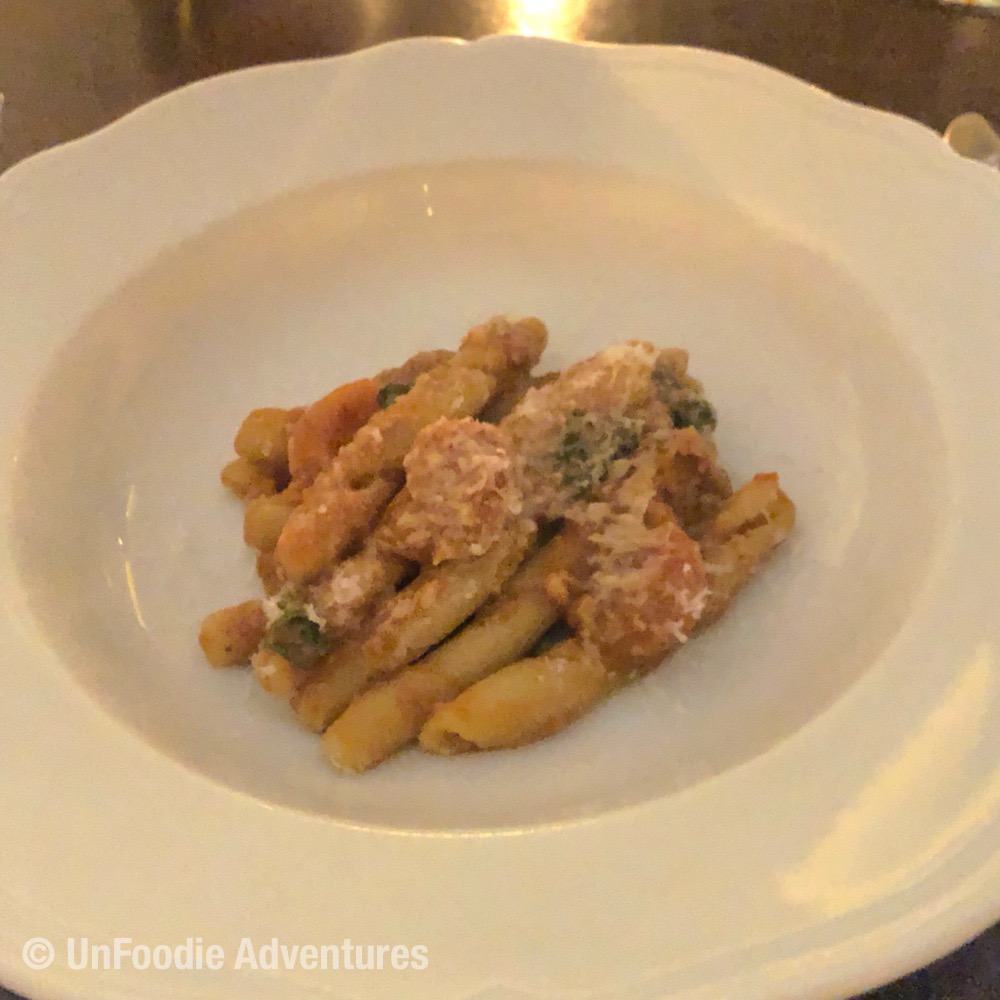
We ended the meal proper with a fried steak of young goat. Given my fondness for fried chicken, it is no surprise that fried goat was ahmaaazingggg…It was well seasoned and came with 3 garnishes – tadziki, a mustard sauce and pickled chili pepppers and onion. I was also served with homemade rest pita and a house salad. Here again, we had a course that could have been an entire meal at another restaurant. The pita was light and fluffy, with mildest buttery flavor. I likened it to a more substantial pancake rather than a traditional flatbread pita. The meat was flavorful but not gamey and the crisp exterior and tender juicy interior was delicious. I wasn’t a big fan of either of the sauces, but polished off the pickled peppers and onion. The red peppers had a twinge of heat but the yellow peppers and onions were bright and sweet… Having a little bit with each bite of meat was how I liked it best. In an age when many chefs coddle meats in sous-vide pouches, it is refreshing to see Chef Monis instead turn to fire and oil, creating flavor and textural contrasts that are becoming more rare in today’s fine dining establishments.

We then took a break from dinner and I got a very special tour of the kitchen. Everyone was working full steam to get the now crowded dining room fed, so I was particularly impressed with Chef Monis who took a few minutes out of the chaos that is a fine dining kitchen to acknowledge me. He was gracious when I conveyed how much I had enjoyed the meal – I’m sure he gets that a lot. But he quickly turned back to his work as the serving staff took my picture in the kitchen.
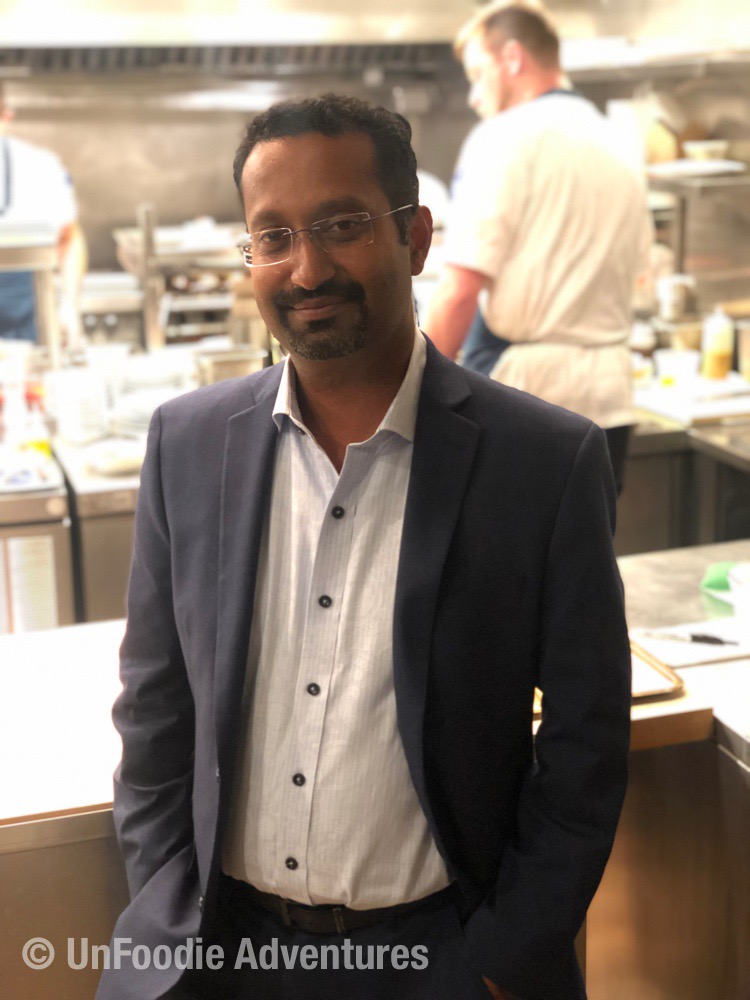
I was pretty stuffed by this point, but still really appreciated the palate cleanser of honeydew melon sorbet with whipped coconut cream, topped with a sparing dash of sea salt. I think I could have been satisfied with this as my dessert. But I’ll be honest, I wasn’t going to turn down anything else of a desserty nature that came my way.
We ended the meal with a brown butter ice cream with plum compote and fresh raspberries served beside a sourdough waffle. I can’t be sure because it was pretty dark, but i think the waffle was either charred (presumably on purpose) or had a bit of a bitter coating on it of some sort. I wasn’t overly fond of this, so instead of putting the ice cream on the waffle with each bite as I had been instructed, I just ate the ice cream and left the waffle to be… why spoil a good thing?
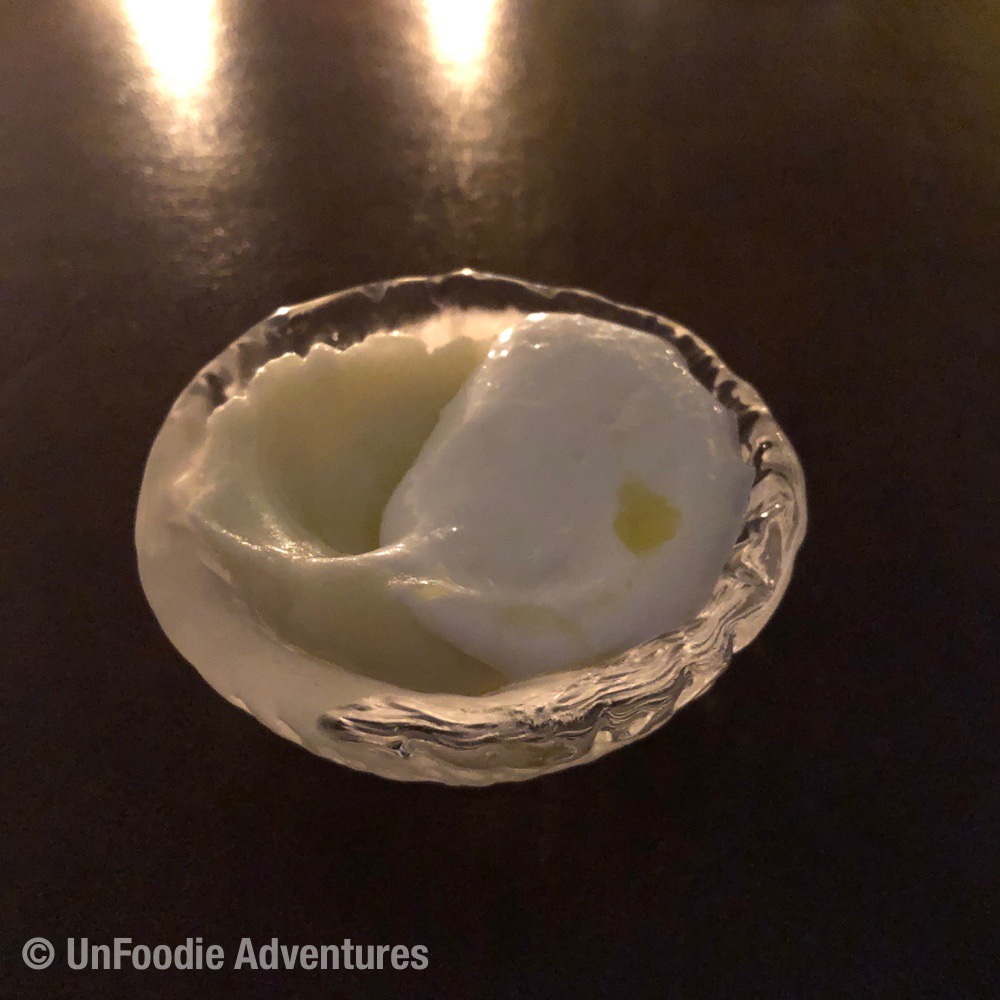
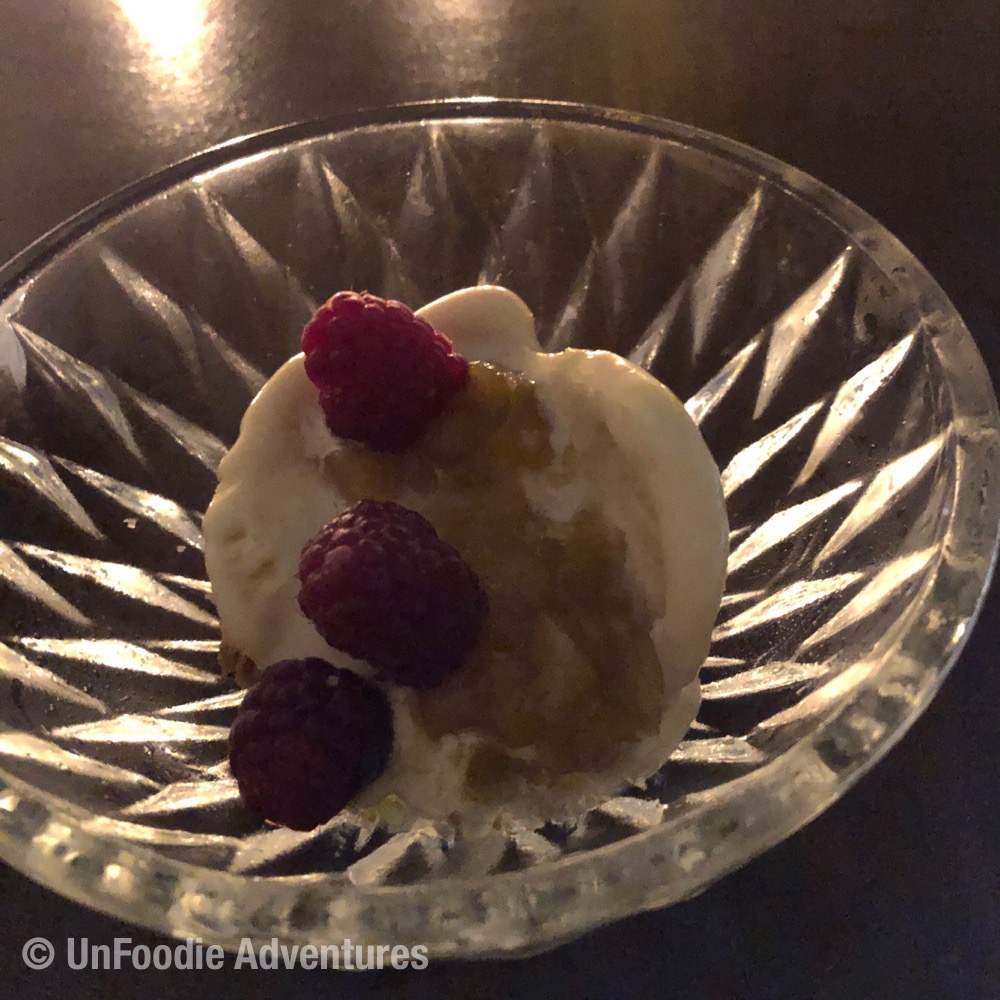
Another picture of my visit to the kitchen
and a handwritten menu!
(they dont just do that for anyone you know…)
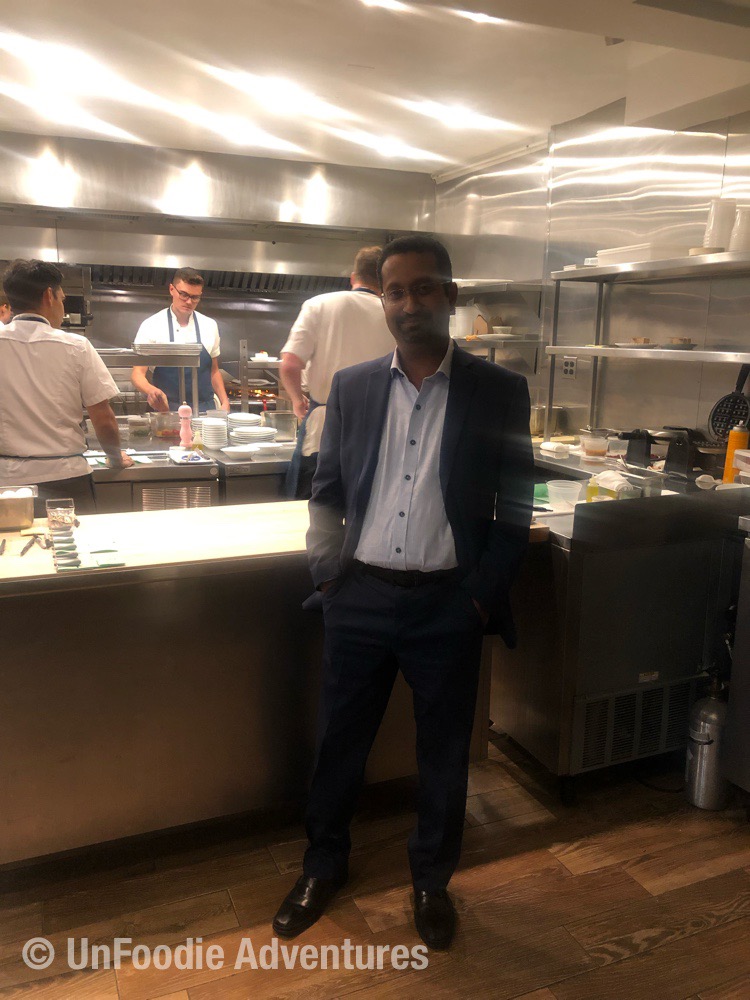

Final Thoughts
I won’t leave you in the dark (ha, see what I just did) about how much I enjoyed my dinner at Komi. I’ve had a few excellent dinners in what is becoming a foodie haven – Washington DC. Komi lives up to its reputation as one of DC’s best restaurants. It has grown from an ingredient-driven passion of a budding local chef to a nationally known gastronomic destination of a elite culinary phenom. Monis has rightfully received a number of accolades including being named Food & Wine’s best new American chef in 2007, and twice a finalist for the coveted James Beard Award for best chef in the Mid-Atlantic. After the fact, I realized how much of a recluse, Monis really is – he does not come out of the kitchen to appease patrons, and only occasionally allows a rare persistent guest entry into the kitchen for a photo – the only ones he allows in his restaurant. I was lucky that I got a few words in addition to a few posed photos.
The purists amongst you may wonder why I post these banned pictures. To them I’ll simply say, for the same reason Ruth Reich’s, the former editor of Gourmet tweeted enthusiastically about her dinner at Komi from a restroom – urban legend or not, the public has a right to know more about Johnny’s genius. And while not everyone will get a reservation to experience this artistry firsthand, I’d encourage you all who can to make your way to Komi for a meal you will not soon forget.
